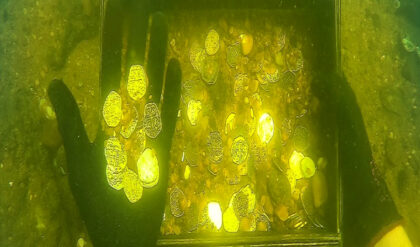Scientists have recently discovered a cosmic cannon. It is an exoplanet the size of Jupiter but with an astonishing density that revolves around a star 730 light years away. Astronomers said the exoplanet, called tOI-4603, has a mass of about 13 Jupiters.
It makes it almost three times the density of Earth and a little more than nine times the density of Jupiter, Science Alert reported. However, it is quite close to its star and has an orbital period of only 7.25 days.

(photo: Pixabay/terranaut) NASA’s tESS discovers a giant exoplanet that has a mass of almost 13 Jupiters and orbits its star in just 7 days
Jupiter-like planet that challenges understanding of planetary formation
The team said it places the Maassie exoplanet in a small but significant category of planets that challenge the understanding of planetary formation and evolution.
Akanksha Khandelwal from the Physics Research Laboratory in India wrote in her research paper, titled “Discovery of a massive giant planet with extreme density around a giant star tOI-4603” a file on the preprint server arXiv and accepted for publication in Astronomia

There is a theoretical limit to the amount of mass a planet can have due to the fact that, above a certain critical limit, the temperature and pressure applied to the core are sufficient to initiate nuclear fusion. The minimum mass at which this process begins in a star is about 85 Jupiter, where hydrogen atoms begin to fuse into helium.
The upper mass limit for a planet is estimated to be between 10 and 13 Jupiters. Brown dwarfs are the things that bridge the gap between them. These planets lack the mass necessary for hydrogen fusion; However, their nuclei can fuse the heavy hydrogen isotope called deuterium, which requires less heat and pressure.
Brown dwarfs are theorized to originate in the same way as stars, from clumps of molecular clouds that collapse under gravity. They are usually circular stars discovered at a distance of at least five astronomical units (AU) or five times the distance between the Earth and the Sun.

NASA’s Transiting Exoplanet Survey Satellite (tESS) is dedicated to the search for planets outside the solar system. According to Interesting Engineering, tOI-4603 was studied by a team of astronomers using data from tESS. They discovered that its radius is 1.042 times that of Jupiter and it orbits its star in 7.25 days.
Using radial velocity data, the team was able to decipher the mass of tOI-4603, which is predicted to be 12.89 times that of Jupiter. Combining this with the planet’s radius gave an average density of 14.1 grams per cubic centimeter.
For comparison, the density of the earth is 5.51 grams per cubic centimeter. Jupiter has a density of 1.33 grams per cubic centimeter. The density of lead is 11.3 grams per cubic centimeter.
But that’s not surprising for a brown dwarf, which has an average radius of 0.83 times that of Jupiter. A brown dwarf with a radius 0.87 times that of Jupiter has a mass of about 61.6 Jupiters. They can become substantially denser than tOI-4603.
Therefore, tOI-4603 still meets most of the criteria to be classified as an exoplanet. But according to tESS data, it is at the cusp of the brown dwarf’s mass limit. Their discovery could help scientists understand the formation of brown dwarfs and giant planets.




